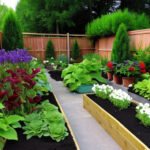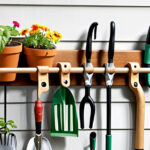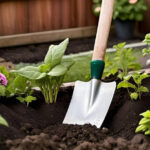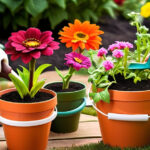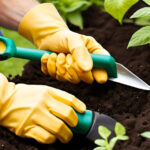Discover Gardening with Kids: 9 Simple and Fun Projects for Little Gardeners. Engage your child with fun, educational, and easy gardening projects that teach responsibility, creativity, and a love for nature
Gardening is a timeless activity that brings people closer to nature. It not only offers a chance to get your hands dirty but also provides numerous benefits for people of all ages. One of the best ways to introduce children to the joys of gardening is by involving them in simple, engaging projects that spark their curiosity and creativity. Gardening with kids can be an educational, rewarding, and fun experience that teaches them about the environment, responsibility, and patience. In this article, we will explore various simple and fun gardening projects for little gardeners that are perfect for nurturing their love for nature.
The Importance of Gardening with Kids
Before diving into specific projects, it’s essential to understand why gardening with kids is so beneficial. Gardening promotes a range of developmental skills and provides an excellent platform for learning. It’s crucial for the following reasons, to name a few:
Encourages Responsibility
Taking care of plants teaches kids responsibility. Whether they’re watering the plants, ensuring they get enough sunlight, or removing weeds, gardening helps children understand the consequences of their actions.
Promotes Physical Activity
Gardening is a hands-on activity that gets kids moving. Digging, planting, and harvesting all encourage physical activity, which is essential for their overall well-being.
Boosts Creativity
Gardening allows children to express their creativity. From designing flower beds to choosing plant varieties, gardening enables them to make decisions and create their little green spaces.
Teaches Patience and Perseverance
Plants don’t grow overnight. Gardening helps children learn the value of patience and teaches them that good things take time. They can see firsthand how their efforts pay off when a plant finally blooms or bears fruit.
Fosters a Connection to Nature
Kids who engage in gardening develop a stronger connection to nature. This connection often translates into a more profound appreciation for the environment and sustainability.
Now, let’s look at some simple and fun gardening projects that can get little hands involved while offering plenty of opportunities for learning and creativity.
1. Planting a Vegetable Garden
One of the most rewarding gardening projects for kids is creating a small vegetable garden. Not only does it teach them about where food comes from, but it also offers the excitement of harvesting and eating the produce they’ve grown. Start with easy-to-grow vegetables like carrots, lettuce, tomatoes, or beans. These plants have a short growing season, so children can quickly see the results of their efforts.
How to Do It:
- Choose a sunny spot in your garden or use raised beds or containers.
- Allow kids to help with digging small holes for seeds.
- Encourage them to choose the vegetables they’d like to grow.
- Teach them about spacing, watering, and plant care.
- As the plants grow, involve kids in checking the progress, watering, and observing changes.
2. Building a Fairy Garden
A fairy garden is a miniature garden that can be customized to your child’s imagination. These tiny gardens are perfect for sparking creativity, and kids will enjoy the opportunity to build and decorate a little world for fairy figurines, miniature furniture, and plants.
How to Do It:
- Find a shallow container, such as a large bowl or tray, or create a small garden space in the yard.
- Add small stones, moss, or bark to create paths and features like ponds or little houses.
- Allow children to choose plants like succulents or tiny flowers to fill the space.
- Incorporate small accessories such as fairy figurines, miniature chairs, or benches to make the garden magical.
Use your child’s imagination to create stories and adventures for their fairy garden!
3. Starting a Flower Garden
If you want to instill a love for flowers, starting a simple flower garden is a great way to engage children in gardening. Flowers are colorful, cheerful, and relatively easy to grow, making them ideal for young gardeners. They also offer an opportunity to teach kids about the different types of flowers and their pollination process.
How to Do It:
- Select a sunny spot and choose flowers that are easy to grow, such as sunflowers, marigolds, zinnias, or pansies.
- Teach kids how to prepare the soil by loosening it with a garden fork or hand tools.
- Help them plant seeds or seedlings and explain the importance of watering and sunlight.
- As the flowers grow, guide your child to observe the changes and the presence of bees and butterflies visiting the blooms.
4. Creating a Sensory Garden
A sensory garden is designed to engage all five senses: sight, smell, touch, taste, and sound. It can be a great educational tool for children, helping them develop sensory awareness and connect more deeply with their surroundings.
How to Do It:
- Plant a variety of plants that engage different senses. For instance, plant aromatic herbs like lavender or mint for smell, or add textured plants like lamb’s ears for touch.
- Add wind chimes or a small water feature to engage the sense of sound.
- Let children taste safe-to-eat plants, such as strawberries, herbs, or edible flowers.
- Encourage kids to close their eyes and explore the garden using their senses. This can be a fun, interactive way to teach them about the natural world.
5. Growing a Seedling in a Cup
For kids who are just starting in gardening, growing a seedling in a cup is a perfect beginner project. It’s easy to set up and provides children with the opportunity to observe the entire lifecycle of a plant from seed to sprout.
How to Do It:
- Start by filling small plastic or paper cups with soil.
- Plant seeds like beans or sunflowers and explain to kids how seeds grow.
- Place the cups near a window that gets plenty of sunlight.
- Water them regularly and encourage your child to track the progress of the seeds. You can even create a chart to mark daily growth.
Once the seedlings are large enough, transfer them to a bigger pot or the garden.
6. DIY Planters with Recycled Materials
Recycling is an important value to teach kids, and what better way than by repurposing old materials to create their planters? This project is a fantastic opportunity for kids to use their creativity while helping the environment.
How to Do It:
- Gather materials like old milk cartons, egg cartons, cans, or even plastic bottles.
- Let your child decorate the materials with paints, markers, or stickers.
- Drill small holes in the bottom for drainage (parents may need to assist with this step).
- Fill the containers with soil and plant seeds or seedlings inside.
- Watch as the plants grow in their new recycled homes, teaching kids about sustainability along the way.
7. Decorating Garden Stones
Garden stones can add a personal touch to any garden. Kids can decorate stones with paints, designs, or even mosaic pieces, turning simple rocks into fun, colorful additions to the garden.
How to Do It:
- Gather some smooth, flat stones from the garden or purchase decorative ones.
- Set up a painting station with acrylic paints or permanent markers.
- Allow children to paint the stones with fun patterns, their names, or designs that match the theme of their garden.
- Once the stones are dry, use them as garden markers, stepping stones, or decorations along flower beds or paths.
8. Starting a Compost Bin
A compost bin is a great project for teaching kids about recycling organic materials and creating nutrient-rich soil. This project not only helps them learn about composting but also gives them a chance to contribute to the health of their garden.
How to Do It:
- Start with a simple compost bin in the backyard or create a smaller version using a plastic container.
- Teach kids what materials can be composted, such as fruit and vegetable scraps, leaves, grass clippings, and eggshells.
- Allow kids to add items to the compost bin and watch as it breaks down over time, eventually becoming rich, dark compost that can be used in the garden.
- This project also teaches kids about the importance of reducing waste and creating a sustainable garden.
9. Building a Bird Feeder
Creating a bird feeder is a fantastic way for children to connect with wildlife and encourage animals into their gardens. It’s a simple project that teaches kids about the birds in their local area while providing an essential food source for wildlife.
How to Do It:
- Use a variety of materials to make bird feeders, such as toilet paper rolls, pinecones, or even plastic bottles.
- For a simple option, cover a toilet paper roll with peanut butter and then roll it in birdseed.
- Hang the bird feeder in a tree or near the garden and observe which birds come to visit.
- This project also offers a chance to discuss the importance of helping local wildlife and the role birds play in the ecosystem.
Gardening with SEO Services: A Digital Garden for Growth
In addition to nurturing a love for nature through gardening, it’s important to cultivate your online presence’s growth. Just as a well-maintained garden flourishes carefully, your website can thrive with the right SEO (Search Engine Optimization) practices. If you’re looking to grow your business online, investing in professional SEO services can significantly improve your visibility, traffic, and overall success.
SEO services help your website rank higher in search engine results, making it easier for potential customers to find you. Whether you’re in the gardening niche, selling products, or providing services, optimizing your site for search engines is crucial for reaching your target audience. A good SEO strategy includes keyword research, content optimization, and improving your site’s user experience, which leads to more organic traffic and better conversions.
If you’re looking to take your online presence to the next level, I highly recommend checking out this SEO Service. Their expert team can help optimize your website, ensuring it’s fully optimized for search engines and ready to attract more visitors. Get started today and watch your website bloom just like your garden!
Conclusion
Gardening with kids is a beautiful and enriching experience that offers opportunities for learning, creativity, and connection to the natural world. Whether you’re planting vegetables, creating a sensory garden, or making a bird feeder, there are plenty of simple and fun gardening projects for little gardeners. These activities teach kids valuable lessons about responsibility, patience, sustainability, and the beauty of nature. if you need further information then check out this
By starting with small projects and gradually introducing more complex gardening techniques, children will gain a sense of accomplishment and develop a lifelong love for the environment. So, get your little gardeners outside, roll up your sleeves, and embark on a gardening adventure that will leave lasting memories and valuable lessons for years to come. if you need information about how to create a zen garden then check out this


